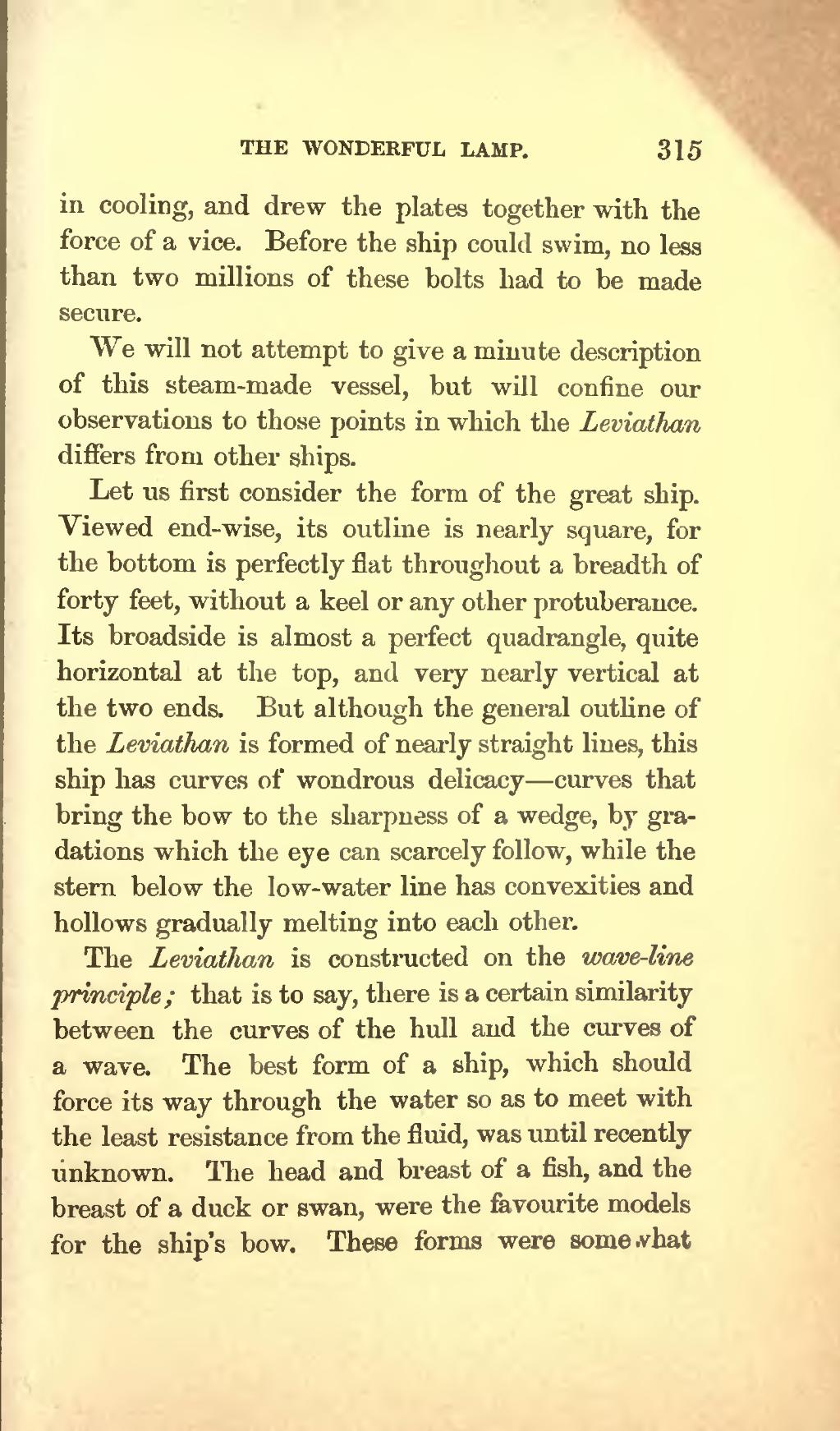in cooling, and drew the plates together with the force of a vice. Before the ship could swim, no less than two millions of these bolts had to be made secure.
We will not attempt to give a minute description of this steam-made vessel, but will confine our observations to those points in which the Leviathan differs from other ships.
Let us first consider the form of the great ship. Viewed end-wise, its outline is nearly square, for the bottom is perfectly flat throughout a breadth of forty feet, without a keel or any other protuberance. Its broadside is almost a perfect quadrangle, quite horizontal at the top, and very nearly vertical at the two ends. But although the general outline of the Leviathan is formed of nearly straight lines, this ship has curves of wondrous delicacy—curves that bring the bow to the sharpness of a wedge, by gradations which the eye can scarcely follow, while the stern below the low-water line has convexities and hollows gradually melting into each other.
The Leviathan is constructed on the wave-line principle; that is to say, there is a certain similarity between the curves of the hull and the curves of a wave. The best form of a ship, which should force its way through the water so as to meet with the least resistance from the fluid, was until recently unknown. The head and breast of a fish, and the breast of a duck or swan, were the favourite models for the ship's bow. These forms were somewhat
